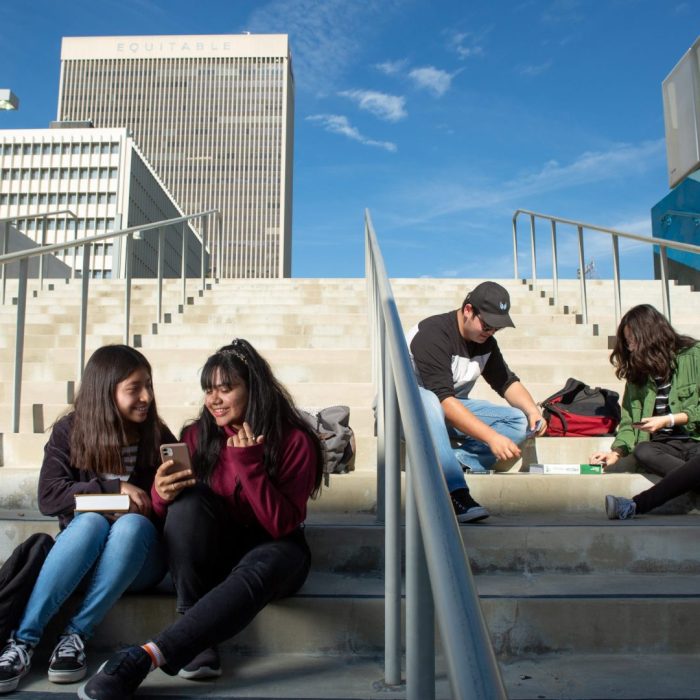Transform Systems
Re-shaping education to career pathways to be more equitable and youth-centered
Photograph: Ava Victoriano
Integrated and collaborative pathways
Transforming systems is about re-designing education and employment systems and institutions so more equitable pathways are accessible to a greater number of young people
Transform Systems: Cross-Sector Change
The idea behind transform systems is about our understanding that many things we think of as “systems” — criminal justice, healthcare, education — are complicated and often difficult to navigate. In addition, systemic barriers that structure everything from what neighborhoods we live in to what schools we attend mean that these various systems do not work equally well for all groups of people such as Black and Latino, and young people experiencing poverty. For many young people, these systemic barriers often prevent them from learning about different career opportunities, connecting with people in various careers who share their background, and navigating between K-12, postsecondary, and employment opportunities. Young people born into privilege and wealth can access more resources than other groups of young people and as a result, are exposed to a wider range of potential education and career pathways. To transform these systems to be both equitable and better aligned with young people’s voices and perspectives, Black and Latino young people, and young people experiencing poverty, need more support and resources like integrated advising services to develop and pursue their education and career pathways.
High school students gather on the stairs between classes. Source: All4Ed
Transform Systems: Moving Forward
Transform systems is also about how we need better coordination and alignment across the K-12, postsecondary, and workforce sectors. By developing and widely disseminating effective models, tools, and platforms that can work in different places and in different contexts, communities can facilitate greater coordination between the K-12, higher education, and employment sectors with successful student outcomes as the primary goals. In addition, if more communities see more student success as a result of coordinated systems, then we can share adaptable roadmaps and stories about how to build these coordinated systems in other places. This could also help create new narratives about success for young people of color, and young people experiencing poverty. Intermediary organizations can potentially play a major part in helping to drive this alignment and transformation across sectors and systems. Narrative shift can also be a powerful lever in transforming systems — people often don’t realize that they are acculturated to specific storylines until they are presented with new ways of thinking about social change and the future. Seeing young people — all young people — as individuals with agency, responsibility, and full of ideas about the careers they want to explore is one way to influence supports and policies to be more in line with what young people need to achieve fulfilling careers and lives.
Photograph: Ava Victoriano



